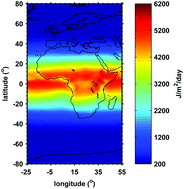Solar ultraviolet radiation in Africa: a systematic review and critical evaluation of the health risks and use of photoprotection
Abstract
Most information on the harmful health effects of solar ultraviolet radiation (UVR) has been obtained in populations in which the majority has fair skin. Here a systematic review of evidence on diseases related to solar UVR in Africa was undertaken, and the appropriateness of effective photoprotection for these people considered. There are few population-based studies on UV-induced skin cancers (melanoma, squamous and basal cell carcinomas) in Africa, although limited reports indicated that they occur, even in people with deeply pigmented skin. The incidence of melanoma is particularly high in the white population living in the Western Cape of South Africa and has increased significantly in recent years. Cataract is extremely common in people of all skin colours and is a frequent cause of blindness, particularly in the elderly. For both skin cancer and cataract, the proportion of the disease risk that is attributable to exposure to solar UVR in African populations, and therefore the health burden caused by UV irradiation is unclear. There was little published information on the use of sun protection in Africa. The potential disease burden attributable to solar UVR exposure of Africans is high, although accurate data to quantify this are sparse. Information is required on the incidence, prevalence and mortality for the range of UV-related diseases in different populations living throughout Africa. Photoprotection is clearly required, at least for those subpopulations at particularly high risk, but may be limited by cost and cultural acceptability.


 Please wait while we load your content...
Please wait while we load your content...